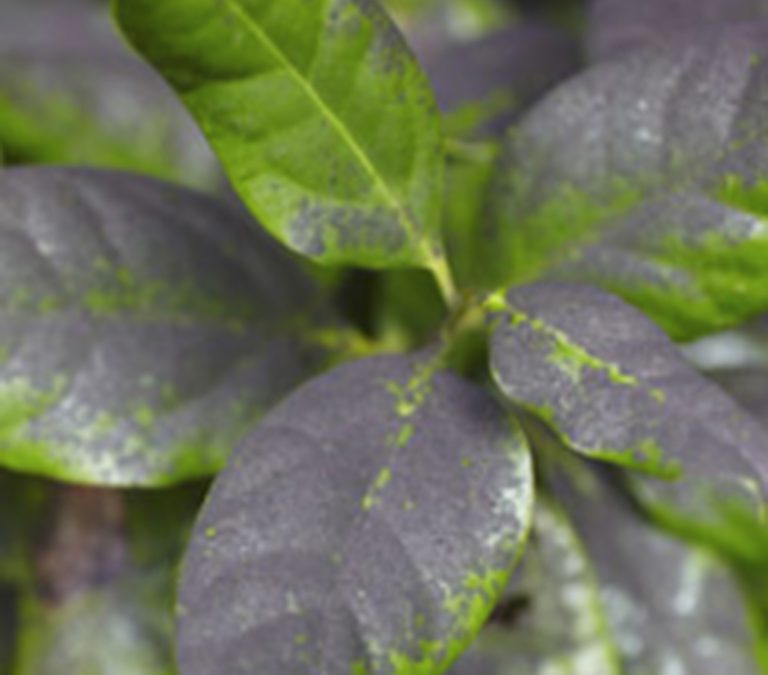What is sooty mould (Fumago vagans)?
Family- Capnodiaceae
Genus- Fumago
Species- vagens
Area of Origin, any environment that can sustain aphids, scales, mealybugs and psyllids.
Current Area(s) Affected: Any environment that can sustain aphids, scales, mealybugs, psyllids. (temperate and tropical climates)
Known Vectors: Not a carrier of any pest or disease
Susceptible Species: Understory plants such as Azalea, Rhododendron, Camelia etc.
Trees: Fagus, Tillia, Largerstomia , Eucalyptus, Grevillea, Acer etc.
Virulence of Pest and Impact It May Have: Fumago vagans can affect the vigour of the plant, reducing the ability to photosynthesis because of the blanketing of the leaf surface.
Sooty mould, Fumago vagans is a non-pathogenic fungus which covers plants with a black sooty material.
Unfortunately, it looks as it sounds; it’s a black soot-like mould that coats the leaves and branches of trees and shrubs, making them look diseased and extremely unwell. Sooty mould is a particular problem for citrus.
Sooty moulds are non-parasitic but are associated with sap-sucking insects (aphids, scales, mealybugs, psyllids) these insects extract sap (carbohydrates) from phloem tissue, sugary secretion deposits on foliage and plants.
This substance, called honeydew contains high levels of simple carbohydrates (sugars).
Spores or fragments of the fungus are blown and carried attaching to the honeydew growing microscopic threads developing the black sooty mould.
Sooty mould is more than one species of fungi, and they each grow on the honeydew
R.J Friend (1965) published a paper looking at the research conducted from the 1800s to the early 1900s, he asks the question: what is Fumago vagans?
Because Fumago vagans was said to be the common cause of sooty mould, Woronichin (1926) found Fumago vagans as generally known to be a mixture of Aureobasidium pullulans and Cladosporium herbarium.
Sooty mould is several different single polymorphic fungi, being Aureobasidium pullulans and Cladosporium herbarium but not isolated to these fungi.
Negar in 1918 carried out research looking at the composite nature of sooty moulds; findings were over 12 different fungi not isolated to Fumago.
It is clear that:
- There is the presence of muri-form fungi (cross walled spores).
- Cladosporium-like, asexual spores are present.
- The fungus is very variable.
- Sooty mould is very common and widespread, indicating that it cannot be isolated to Fumago vagans.
The botanical name Fumago vagans has been used to describe any dark fungus material on leaves if perithecia is not present.
(Perithecia, the fruiting structure of fungi)
In 1956 Lanjouw stated that the name Fumago vagans Pers. must be rejected because it is based on type material consisting of two entirely discordant elements.
At first glance you might think that your tree/shrub are beyond saving such is the severity of the appearance of sooty mould, but what you need to worry about is the damage being done by the insects.
The sooty mould itself is a problem; however, aside from the aesthetics, it can block sunlight and affect the growth/photosynthesis of your tree/shrub.
How to get rid of sooty mould/ Control Measures
You might have already guessed this, but the best way to get rid of sooty mould is to kill the insects at the root cause; eliminate the mould’s food source, eliminate the honeydew.
Using a pesticide like Neem oil is a great place to start; make sure that the foliage is well covered and you don’t miss any areas.
Control, suppress the insect in question to an acceptable level.
Once you’ve killed all of the insects, you can then start to remove the sooty mould from your tree. A regular natural detergent works just fine, again, making sure that you cover all areas affected by the mould and don’t miss the underside of any leaves. Be aware that you may need to repeat this step a few times, particularly if your mould infestation is heavy or deeper set. You shouldn’t need to reapply any detergent.
Following this, you can either let the rain do the work, sooty mould will weather away, or you can give the tree a good old-fashioned hose down with clean water. Sooty mould will return with the insect cycle and favourable conditions though.
Remember to be vigilant going forward and check your tree regularly of insect infestations, Control, suppress the insect in question to an acceptable level.

